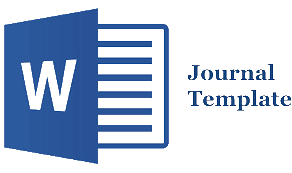“I Think Our Writing Become Tidy, Clear and Also Perfect” Students’ Feedback on Writing Class with Technology Performance
Abstract
Integrated teaching learning instruction with technology has been fascinating for EFL students currently. In writing class, it takes several times for students to revise their draft after receiving feedback. Rather than using a plain paper with bullet, students nowadays prefer screen with the keyboard. In this study, it aimed at exploring the students’ preferences on applying computer in writing class. The data from 33 university students taking Writing class were collected and analyzed descriptively. To detract bias, the teacher was also interviewed. The results revealed that 91% of the students prefer to write on email. Moreover, 88% agreed that the media is helpful to ease the writing and revise English paragraph. However, teacher assumed that several students do not know how to use computer correctly.
Full Text:
PDFReferences
AbuSeileek, A., & Abualsha’r, A. (2014). Using peer computer-mediated corrective feedback to support EFL learners’ writing. Language Learning & Technology, 18(1), 76–95.
Aragón-Mendizábal, E., Delgado-Casas, C., Navarro-Guzmánm, J. I., Menacho-Jiménez, I., & Romero-Oliva, M. F. (2016). A comparative study of handwriting and computer typing in note-taking by university students. Comunicar, 24(48), 101–110. https://doi.org/10.3916/C48-2016-10
Azizaturrohmi, Z. (2019). The Use of Assistance Computer Word Processor To Teach Writing Skill For EFL learners. VELES Voices of English Language Education Society, 3(1), 38–43. https://doi.org/10.29408/veles.v3i1.1021
Bani Abdelrahman, O. N. M. (2013). The Impact of Using the Word Processor to Develop EFL Learners’ Writing Skill at Al-Imam Mohammad Ibin Saud Islamic University. IUG Journal of Humanities Research, 21(2), 1–26. https://doi.org/10.12816/0013730
Burston, J. (2013). Computer-Mediated Feedback in Composition Correction. CALICO Journal, 19(1), 37–50. https://doi.org/10.1558/cj.v19i1.37-50
Creswell, J. W. (2014). Research Design: Qualitative, Quantitative and Mixed Methods Approaches (4th ed.). Thousand Oaks, CA: Sage..
Garcia Mendoza, G. A. (2014). A comparative study of computer and mobile phone-mediated collaboration: the case of university students in Japan. Revista de Universidad y Sociedad Del Conocimiento (RUSC), 11(1), 222–237. https://doi.org/10.7238/rusc.v11i1.1898
Graham, S. (2008). The Power of Word Processing for the Student Writer Written for Renaissance Learning. In The Power of Word Processing for the Student Writer Written for Renaissance Learning (pp. 1–12). Renaissance Learning.
Hyland, K., & Hyland, F. (2006). Feedback on second language students’ writing. Language Teaching, 39(2), 83–101. https://doi.org/10.1017/S0261444806003399
Kutlu, Ö. (2013). Using Technology for Developing Writing in an ESP Class. Procedia - Social and Behavioral Sciences, 70, 267–271. https://doi.org/10.1016/j.sbspro.2013.01.064
Lim, F. V., & Phua, J. (2019). Teaching Writing with Language Feedback Technology. Computers and Composition, 54, 102518. https://doi.org/10.1016/j.compcom.2019.102518
Linuwih, E. R., & Winardi, Y. K. (2020). Improving Students’ Writing Skill Using a Mobile Learning Application. Jurnal Basis, 7(2), 281. https://doi.org/10.33884/basisupb.v7i2.2433
Little, C. W., Clark, J. C., Tani, N. E., & Connor, C. M. (2018). Improving writing skills through technology-based instruction: A meta-analysis. Review of Education, 6(2), 183–201. https://doi.org/10.1002/rev3.3114
Omar, A., Miah, M., & Belmasrour, R. (2014). Effects of Technology on Writing. International Journal of Science and Applied Information Technology, 3(2), 59–70.
Popping, R. (2015). Analyzing Open-ended Questions by Means of Text Analysis Procedures. BMS Bulletin of Sociological Methodology/ Bulletin de Methodologie Sociologique, 128(1), 23–39. https://doi.org/10.1177/0759106315597389
Robinson, J., Dusenberry, L., Hutter, L., Lawrence, H., Frazee, A., & Burnett, R. E. (2019). State of the Field: Teaching with Digital Tools in the Writing and Communication Classroom. Computers and Composition, 54(April 2017), 102511. https://doi.org/10.1016/j.compcom.2019.102511
Salehi, H., & Amiri, B. (2019). Hadi Salehi 1 *, Bahareh Amiri 1. Impacts of Using Microsoft Word (MS) Sofware on Iranian EFL Lecturer’s Grammar Knowledge, 4(April 2018), 1–10.
Ta’amneh, M. A. A. A. (2021). The Use of Smartphones in Learning English Language Skills: A Study of University Students’ Perspectives. International Journal of Applied Linguistics and English Literature, 10(1), 1–8. https://doi.org/10.7575/aiac.ijalel.v.10n.1p.1
Van Der Steen, S., Samuelson, D., & Thomson, J. M. (2017). The Effect of Keyboard-Based Word Processing on Students With Different Working Memory Capacity During the Process of Academic Writing. Written Communication, 34(3), 280–305. https://doi.org/10.1177/0741088317714232
Wolach, A. H., & McHale, M. A. (2001). A word processor optimized for preparing journal articles and student papers. Behavior Research Methods, Instruments, and Computers, 33(4), 540–543. https://doi.org/10.3758/BF03195413
Yang, Y. F., & Kuo, N. C. (2020). New teaching strategies from student teachers’ pedagogical conceptual change in CALL. System, 90(123), 102218. https://doi.org/10.1016/j.system.2020.102218
Yaser, A. (2021). The effect of using word processor in teaching writing skill among secondary students in schools in Jordan. Educational Research and Reviews, 16(7), 272–278. https://doi.org/10.5897/err2019.3757







